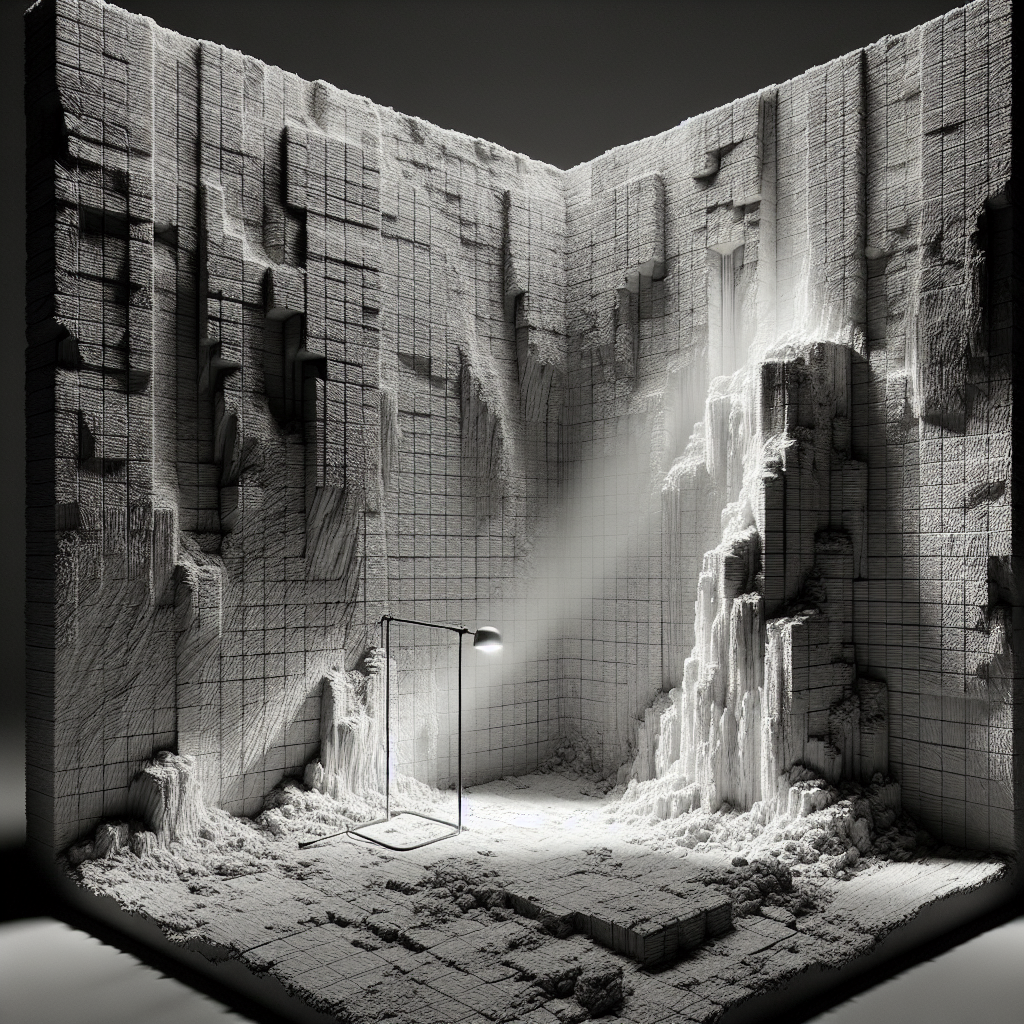An Illuminating Introduction to Lighting Distribution
Have you ever wondered how architects and interior designers manage to create atmospheres in spaces that both captivate and serve a purpose?
A major suspect behind this magic is the often underestimated art and science of lighting distribution.
Just as a painter needs their palette and a writer their words, a designer requires the optimal lighting distribution to truly bring a room to life.
By manipulating how, where, and the intensity with which light falls within a space, a designer can enhance aesthetics, ensure functionality, and increase energy efficiency.
Whether you’re an architect, an interior design enthusiast, or simply looking to add a little more light to your life, we invite you on this enlightening journey.
Read on and let’s shed some light.
Table of Contents
The Five Types of Lighting Distribution in Construction
Guiding You Through the Illuminating Maze of Lighting Patterns
Lighting distribution, a vital aspect of architectural designs, can drastically transform any space. To help you navigate this often overlooked area, we’ll break down the five key types of lighting distributions.
Types of Lighting Distribution
1. Direct Lighting
Imagine being under the spotlight while performing on the stage. That’s what direct lighting is. Coming straight from a source and pointing to a specific area, it offers clear and precise illumination.
2. Indirect Lighting
Now, think about the subtle radiance beautifully diffused across the room. This is indirect lighting, which gets reflected off surfaces before it reaches your eyes. It’s gentle, cozy, and perfect for creating comfortable atmospheres.
3. Semi-Direct Lighting
A mix of spotlight and diffused radiance, semi-direct lighting offers the best of both worlds. A large part of the light is directed downward, highlighting a particular area, while some of it is spread around for a pleasant ambience.
4. Semi-Indirect Lighting
Semi-indirect lighting, the inverse of semi-direct lighting, throws more light upwards, diffused off the ceilings or walls. A small part of it is distributed downwards to prevent overly dark areas.
5. Direct-Indirect Lighting
Operating on equal ratios, direct-indirect lighting provides balanced light distribution. With half the light sent downwards and the other half sent upwards, it harmoniously illuminates any space.
Choosing the Right Lighting Distribution: Things to Consider
| Lighting Type | Best for |
|---|---|
| Direct Lighting | Tasks that require precise visibility, like reading or cooking. |
| Indirect Lighting | Areas where relaxation or casual socialization happens, like living rooms. |
| Semi-Direct Lighting | Dining rooms or kitchens where a primary area needs focus, but with overall illumination. |
| Semi-Indirect Lighting | Contemporary office spaces or study rooms. |
| Direct-Indirect Lighting | Spacious areas like lobbies or halls that require uniform light distribution. |
Remember, the right lighting distribution depends on a room’s function and desired ambiance. Use this newfound knowledge to make lighting decisions that significantly enhance your architectural designs.

The World of Light Distribution
Why Does Light Distribution Matter?
When creating an ideal atmosphere for a space, lighting distribution can make or break the perception and efficacy of a room. Light distribution affects how objects and individuals are perceived, impacting overall aesthetics and functionality. For instance, inadequate lighting can make a spacious room feel small and cramped, while well-distributed light can create the illusion of more space.
The Science Behind
Light science, or photometry, is the key. It is the field that studies the measurement of light, in terms of its perceived brightness to the human eye. Different types of light distributions are based on the principles of photometry.
The Art of Applying Light Distribution
How does one apply the principles of light distribution? It all comes down to understanding the space’s purpose and knowing which type of lighting distribution is optimal.
Design Aesthetics
For interior designers, architectural lighting plays a crucial role in highlighting or dimming certain areas in a room to create an aesthetically pleasing environment. The palette of a room often influences the choice of lighting – Lighter colors reflect light, therefore indirect lighting is often used in such cases.
Task Efficiency
Think about a library or office setting. They rely heavily on direct and semi-direct lighting to ensure task efficiency. Equally essential is the strategic placement of each light source to cater to the specific function of each area of the room.
Energy Efficiency
Light distribution also has a significant impact on energy efficiency. Direct lighting is often more energy-intensive because it’s targeted, while indirect lighting can illuminate a larger area with more efficiency.

Types of Lighting Fixtures for Different Distribution
Different types of fixtures are designed to provide various lighting distributions.
- Direct Lighting: Desk lamps, pendant lights, track lights
- Indirect Lighting: Wall-mounted lights, uplighters, cove lighting
- Semi-Direct Lighting: Certain types of pendant lights, torchiere lamps
- Semi-Indirect Lighting: Traditional chandeliers, selected ceiling fixtures
- Direct-Indirect Lighting: Some ceiling and pendant fixtures, specialty architectural fixtures
Overlaying with Natural Light
An important facet of lighting design that we should not discount is natural light. Architectural spaces now are increasingly being designed to take advantage of natural daylighting techniques. Overlap artificial lighting distribution plans with natural light can help to improve the energy efficiency of a space, enhance aesthetics, and promote well-being. Each type of the lighting distribution mentioned can take a different character when overlapped with natural light.
Implementing lighting distribution doesn’t have to be as daunting as it sounds. With a solid understanding of the various types of lighting distributions and when to use them, you can create well-lit, functional atmospheres tailored for any space and purpose.
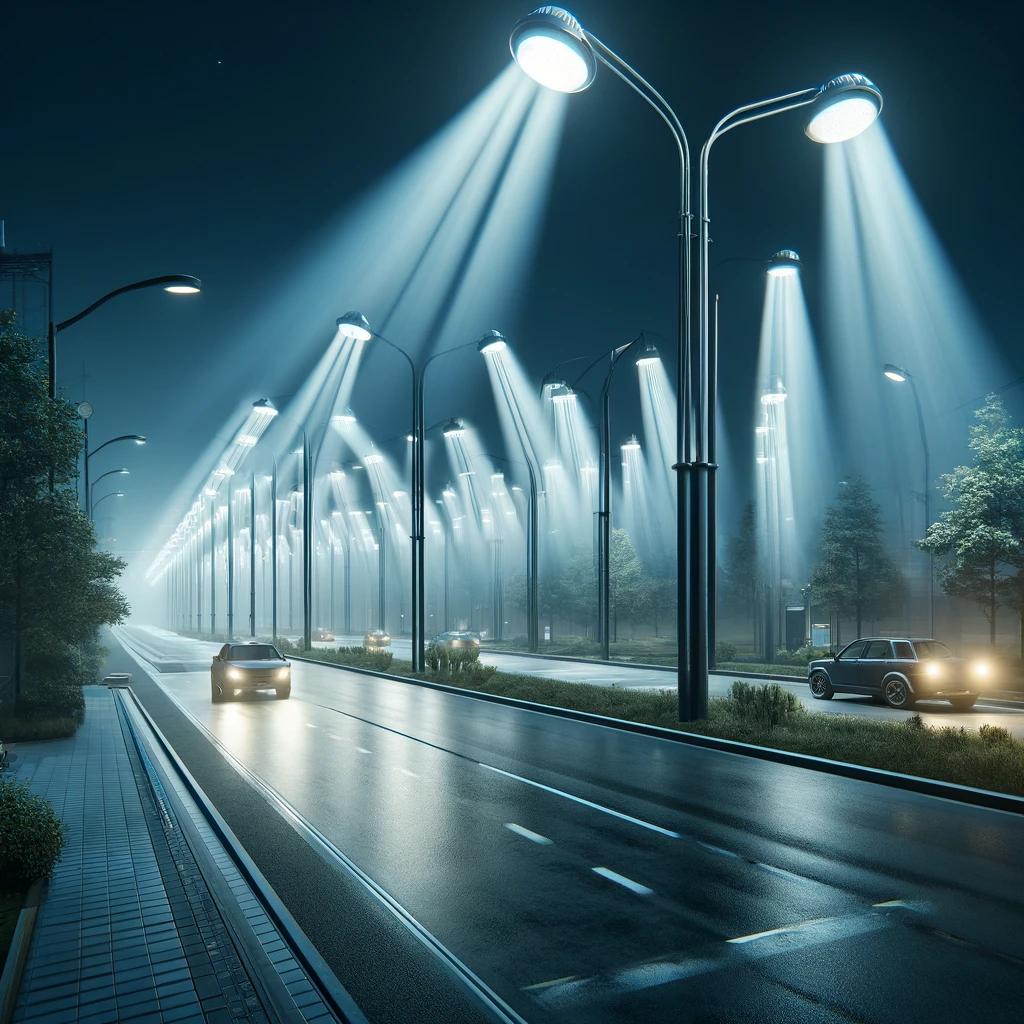
Shining A Spotlight: Type 2 Light Distribution Explained
What is Type 2 Light Distribution?
Type 2 Light Distribution, although not mentioned in the traditional breakdown of lighting distribution, is a critical part of outdoor lighting arrangements. This lighting type plays a significant role in emphasizing specific outdoor areas with a controlled spreading of light.
The Basics of Type 2 Light Distribution
Simply put, Type 2 Light Distribution is a lighting scheme designed to cover wide spaces more extensively. While the light spreads on both sides of the fixture, it distributes more toward one side, aiming to light up a larger area on that side. This variation from side to side provides a broader lighting pattern that illuminates wider areas without wasting light.
Where and When to Use Type 2 Light Distribution?
Type 2 light Distribution is excellent for lighting up long, narrow paths like walkways and alleys. Because the shape of the distribution tends to be oval, it is frequently seen in landscape lighting, sidewalks, as well as parking lot perimeters where the light needs to be spread evenly across a long stretch.
Benefits of Using Type 2 Light Distribution
- Efficient Use of Light: By directing the intensity of light toward one side, Type 2 Light Distribution ensures focused, efficient illumination.
- Wide Coverage: With its asymmetric light spread, this lighting type excels at covering wide, elongated spaces, minimizing dark corners.
- Safety: Type 2 Light Distribution enhances outdoor safety by brightly illuminating pathways and alleys.
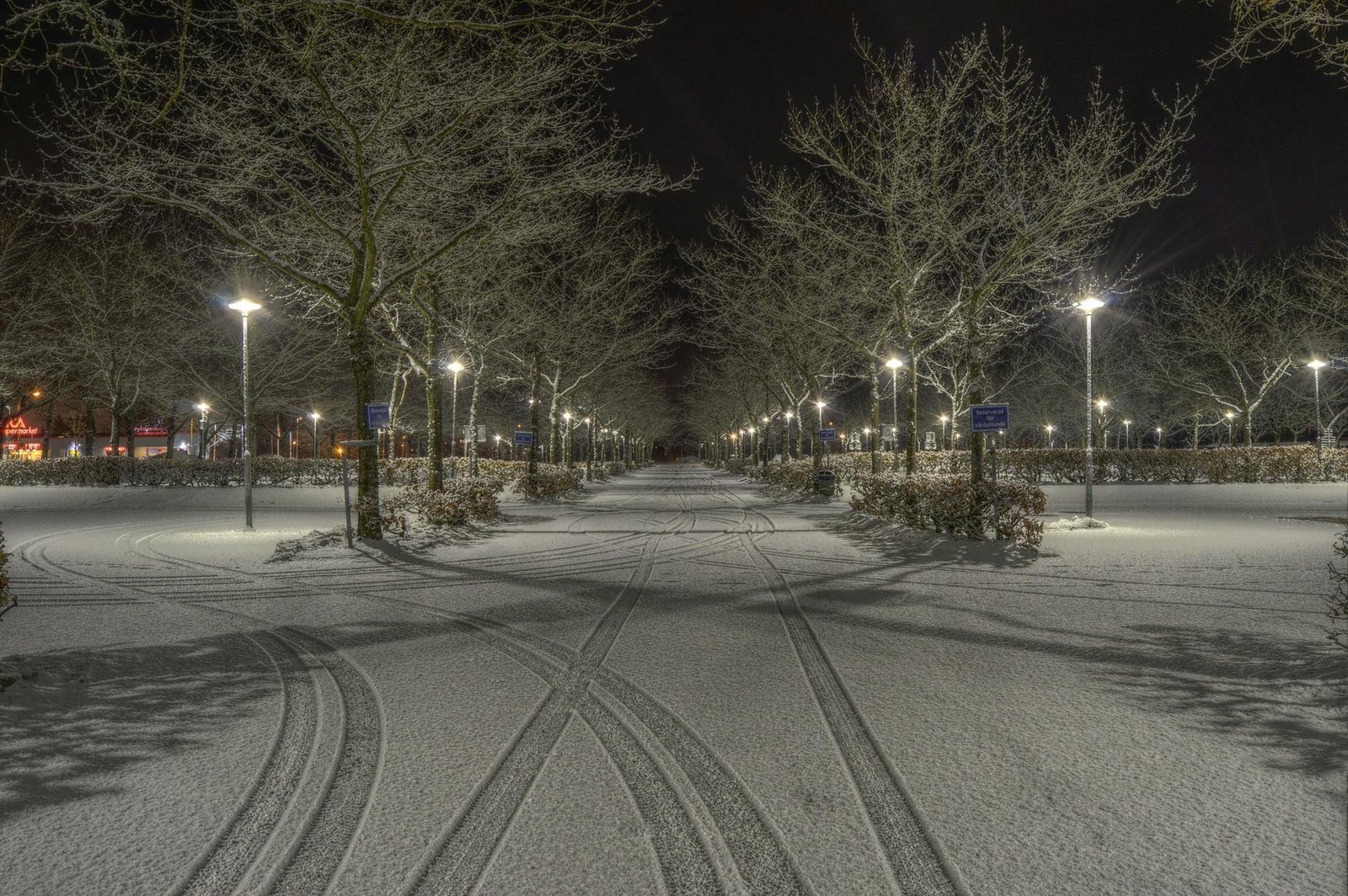
Type 2 Light Distribution Fixtures
Appropriate fixtures for Type 2 lighting usually include area lights, pathway lights, and bollards. Area lights are typically mounted on poles and are extensively used around parking areas. Pathway lights and bollards are predominantly leveraged in landscape lighting.
Guide to Implementing Type 2 Light Distribution
- Understand Your Space: Analyze the area you wish to illuminate. Is it narrow, long, or both? Understanding your environment is the first step in deciding if Type 2 Light distribution is right for you.
- Plan Your Fixtures: Position your fixtures in a way that maximizes the light spread on the desired area. Ensure it does cover the necessary spots without wasting light where it’s not needed.
- Test and Adjust: Once installed, test your lights at different times of day and adjust the fixtures as needed for optimal illumination.
With a proper understanding of lighting mechanisms, including Type 2 Light Distribution, you can drastically improve the functional aesthetics of your outdoor spaces.

Boosting Aesthetics and Function
Bright Reasons to Appreciate Light Distribution
A well-calibrated light distribution system isn’t just an ornamental aspect of your architecture, but also a key player in setting the ambience, improving the functionality, and enhancing safety. By understanding types of light distribution, you can reap the desired dividends.
Visual Enhancements
A well-dispersed light distribution can augment the aesthetics of a room. Since lighting sets the mood, it can aesthetically boost a room’s feel as per your design aspirations. Crisp direct lighting can be used to highlight art pieces or architectural details of interest. On the other hand, a softer, diffused lighting can create an inviting, intimate atmosphere for relaxation.
Boosting Functions
Several functions within a space can be optimized using appropriate lighting. Workspaces, for instance, often require a blend of direct and semi-direct lighting for task efficiency, creating a focused, productive ambiance. Similarly, spaces designed for relaxation – such as living and bedrooms – could utilize indirect lighting to enable a comforting setting conducive to rest.
Improving Safety
Properly distributed light can significantly augment safety, particularly in larger open spaces or paths. This is where lighting solutions like Type 2 Light Distribution come to the fore. By offering broad, balanced lighting along walkways and parking lots, they reduce chances of mishaps and increase overall outdoor safety.
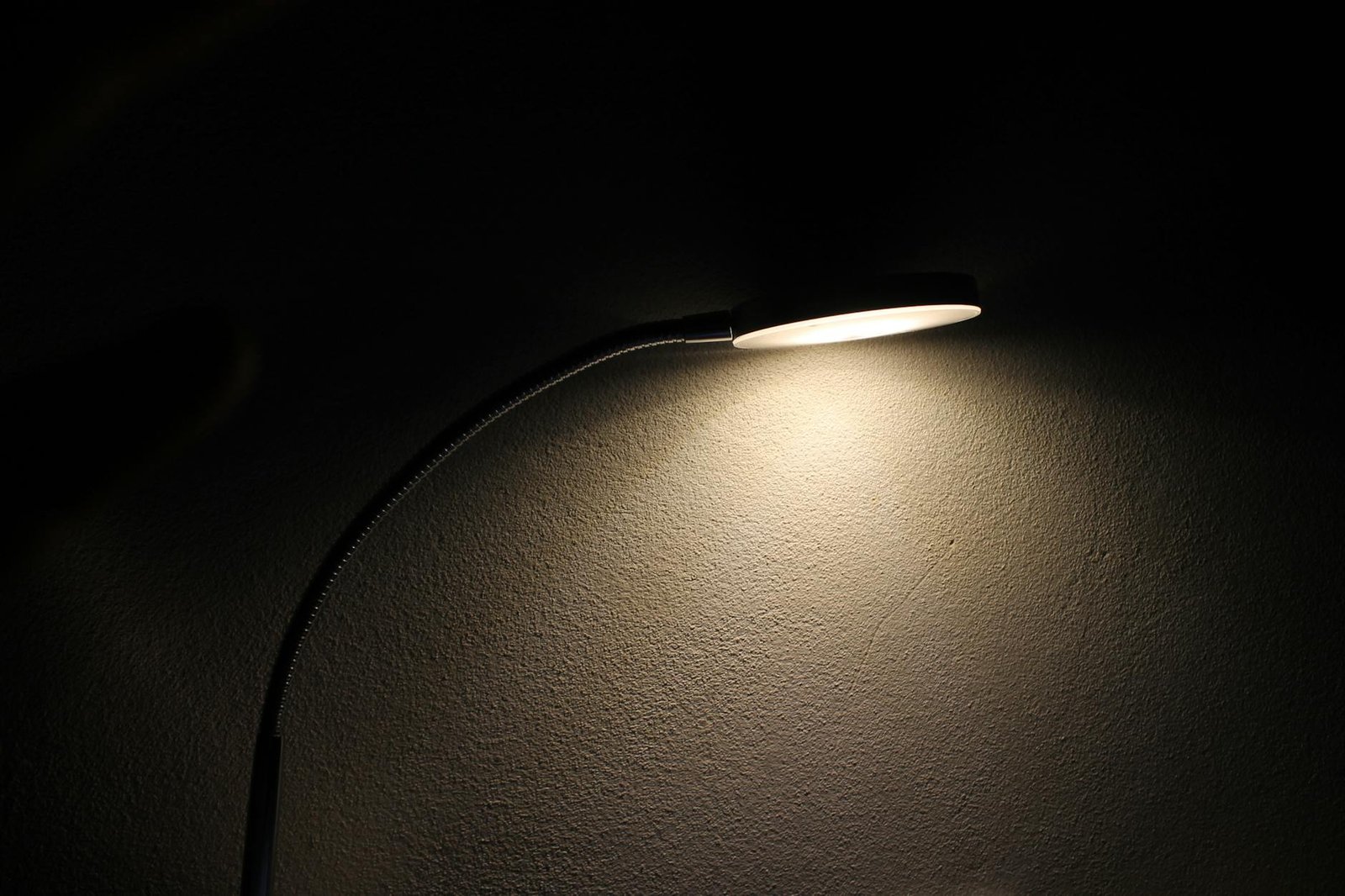
Light Distribution and Energy Efficiency
The often-underappreciated aspect of light distribution is its direct correlation with energy efficiency. Efficiently distributed light can limit the need for multiple light sources in a given space and thereby reduce energy consumption.
Planning with Energy Efficiency
While planning for your lighting, it’s worth incorporating strategies that boost energy efficiency. For instance, areas with lighter-colored walls can make do with less lighting, as lighter colors reflect light, reducing the need for additional light sources. Similarly, using fixtures that encourage direct-indirect lighting can serve to illuminate larger areas with lesser energy input.
Optimizing with Natural Light
Natural light is a rich source that can replace or reduce the need for artificial illumination during daylight hours. No conversation on light distribution can be complete without acknowledging this significant contributor.
Confluence of Natural and Artificial Light
When designing light distribution, one must take into account the orientation of windows, skylights, and other sources of natural light that flood the room. By smartly aligning artificial lighting with the course of natural light during different times of the day, you can maximize illumination while minimizing energy use.
Natural light’s effects vary significantly by the hour and season. The interplay of natural and artificial light can create vibrant lightscapes, enhancing the visual effect in a space.
Finding Light in Darkness: Adapting Light Distribution to Needs
Lighting isn’t a one-size-fits-all. The same space could require different lighting distributions based on different needs throughout the day or for various events.
Adapting Light Distribution to Space and Time
Good light planning accommodates versatile needs. For example, a dining room could need more focused lighting during a supper and softer lighting during a party. Or a workspace might require bright, direct light during hectic working hours but softer, diffused light for an evening gathering.
Tackling Dramatic Changes
Sudden onset of darkness due to weather or lack of natural light needs a thoughtful approach towards lighting. Here, automatic adjustment of light intensity can help maintain consistency in light levels throughout the day. Smart LED systems can adjust color temperature and intensity based on natural light availability, ensuring optimal light distribution for every scenario.
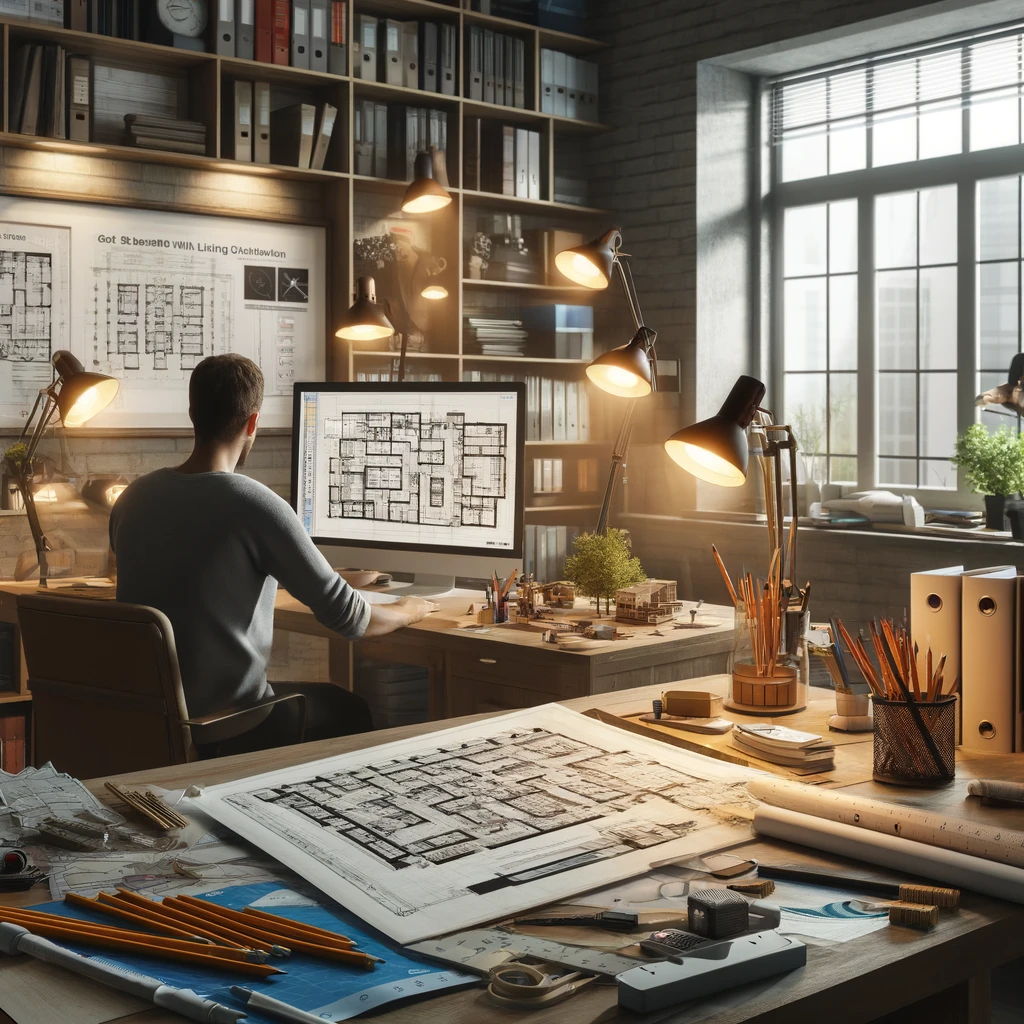
How to Get Started With Lighting Distribution
Integrating lighting distribution with architectural designs can seem like a herculean task, but it needn’t be. With a grip on basics, you can navigate through this landscape.
Getting Started with Light Distribution
When you’re at the drawing board, start with mapping out the functions of the space. Develop an understanding of how much light each activity requires and plan your fixtures and light distribution accordingly. Employ different types of distribution for different areas based on the light needs and time of use.
Nailing the Application
The next step is the application. Be it your DIY home project, or an expansive commercial one, placement and angling of light sources directly affect the extent and direction of light spread. Remember to integrate natural light in your plan to make the most of every light source.
Illuminating Challenges
Regardless of how well you plan, real world can pose unforeseen challenges. Once lights are installed, perform a thorough check at different times of the day to evaluate how your light distribution solution is working. Fine-tune the angles, adjust the fixture placements, or change light sources if needed.
In the larger spectrum of architectural designs, light distribution might seem like a small blip, but its impact is profound. By investing time and thought into this component, you can elevate your spaces from ordinary to extraordinary.

Flicking the Switch on Your Understanding
Whether you’re styling a cozy corner in your home, designing a functional office space, or planning an expansive lobby, understanding and applying these five key types of lighting distribution can alter your interior’s ambiance remarkably. The critical first step is to consider the purpose of the room – do you need precision for task-focused spaces, soft illumination for relaxation areas, or a balanced glow for larger locales?
Remember, light has an incredible power to manipulate our perception of spaces and affect our mood in unnoticeable yet profound ways. With this guide, you’re now equipped to navigate the illuminating maze of lighting patterns and create spaces that not only look beautiful but also align with their intended function. So go on and let your designs shine, fellow lighting enthusiast!
